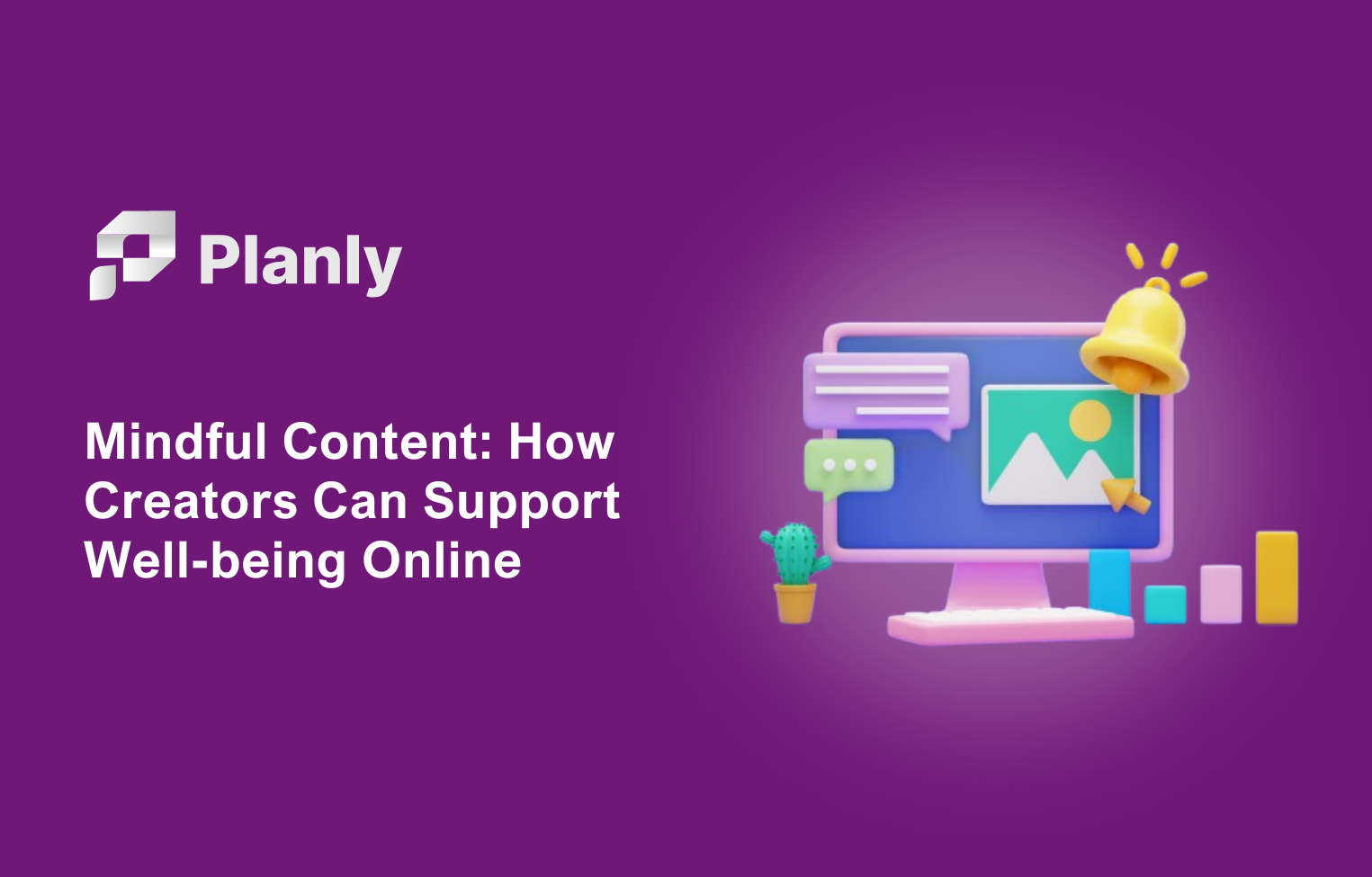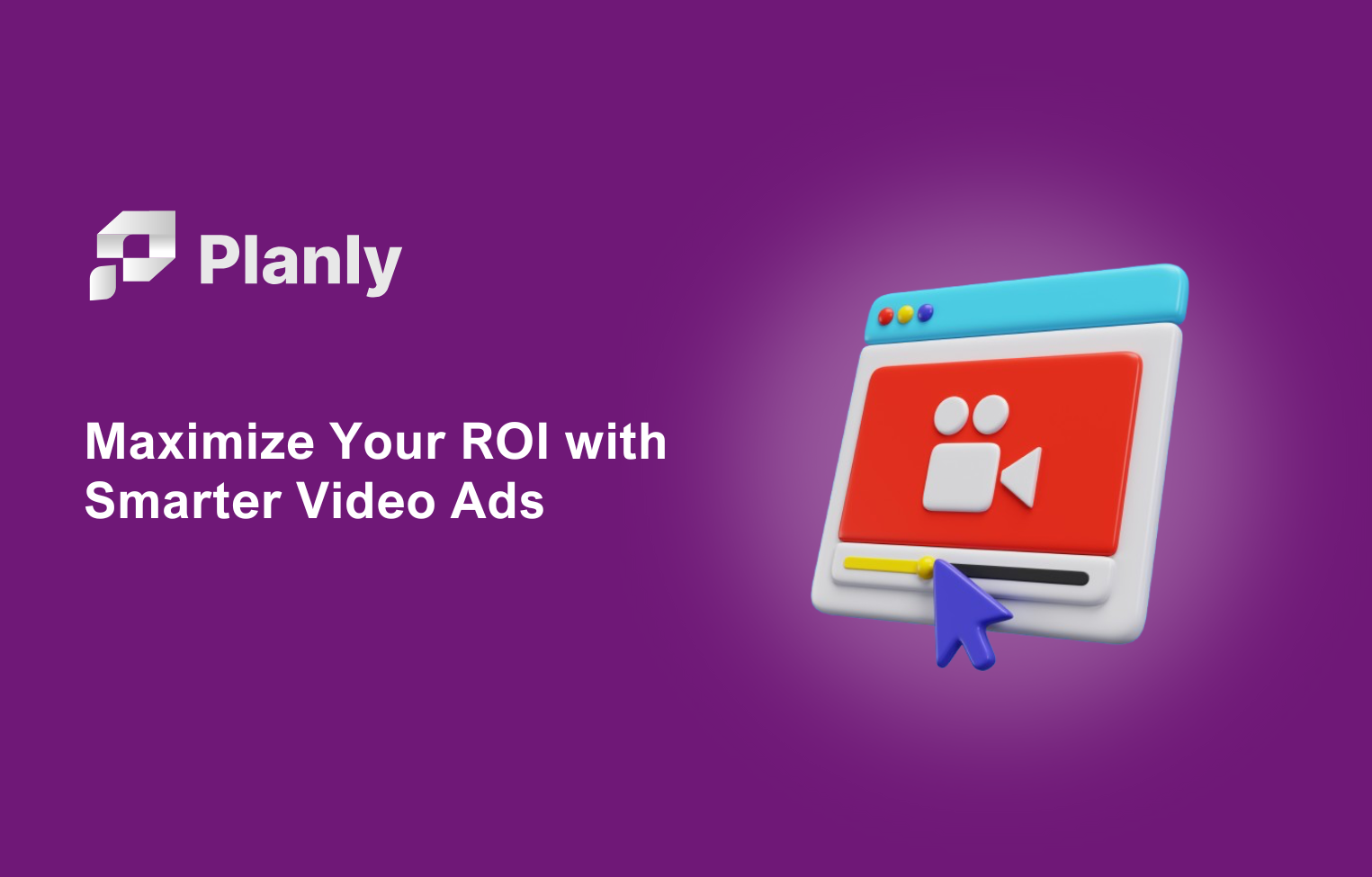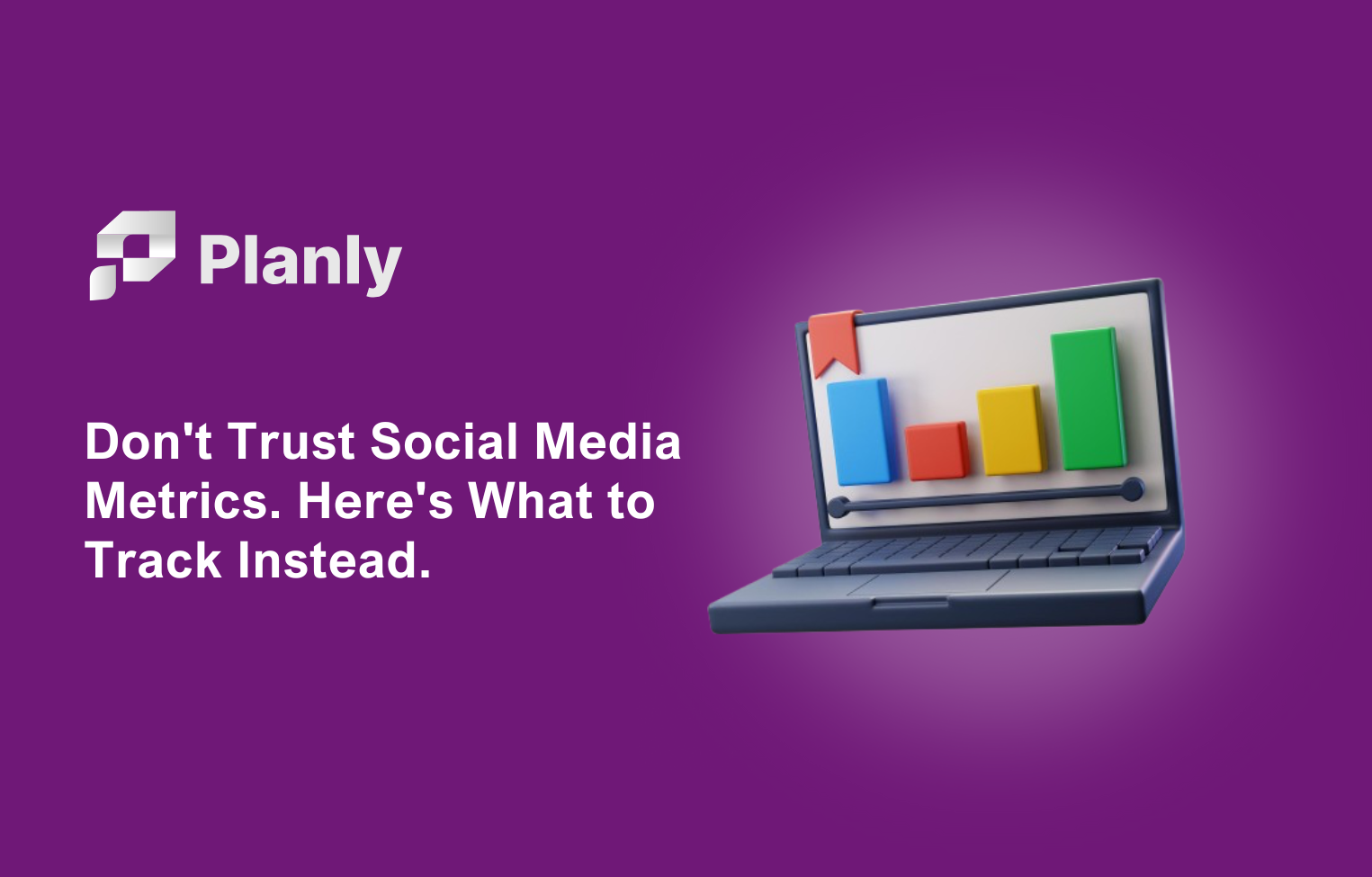KPI means “key performance indicator” and it’s widely applied to the digital world to track performances. What is very important to understand from the literal translation is that Instagram KPIs alone cannot be the goal of an advertising campaign or any other social media strategy. This is a mistake.
Instagram KPIs are metrics that let you know if you have achieved your social media goals and what parameters you are missing. Based on this data, you can make decisions about changing the chosen strategy.
It is also important to understand that each Instagram metric can be a necessary condition for effectiveness but cannot be the only key parameter for the campaign as a whole. Tracking key metrics is essential, and integrating an AI Instagram caption generator can improve post engagement.
Here is a short glossary for some KPI terms:
ER = reactions/followers * 100%
ER post = post reactions/followers * 100%
ER reach = reactions/reach* 100%
ER view = reactions/view* 100%
ER day = reactions per day/followers* 100%
Love rate = likes/followers * 100%
Talk rate = comments/followers * 100%
Share rate = shares/followers * 100%
CPC = cost per click
CPA = cost per action
CPM = cost per mile
CPL = cost per lead
CPF = cost per follower
CTR = click-through rate
How to use KPIs on Instagram
Instagram KPIs is an important marketing concept. And if we are talking about Instagram, then here are the most often analyzed KPIs:
- change in the number of subscribers;
- change in engagement;
- the number of visits to the account;
- the number of visits to the site through the account (if the profile has a link to the main site);
The analysis of only one indicator does not make sense. It is necessary to look at the big picture. For example, you may increase followers on Instagram, but your Instagram reach can still stay unchanged.
This happens when bots are added to the account. Therefore, it is advisable to talk not about the number of subscribers but the number of the target audience.
To organize your work with KPIs, you need a pivot table that will help you put things in order. And here is the scheme of work with this table:
- Choose a direction and define the necessary goals.
- Choose key indicators to achieve your goals. Decide on the calculation formula and tracking methods.
- Measure the value of the indicator at the beginning of the period.
- Set the required period for measurement and determine the methods of influencing the indicator.
- At the end of the period, you calculate the cost of achieving key Instagram business metrics and, of course, their dynamics.
- Based on the data received, you predict budgets, determine the growth of the metric over the period and correct actions.
- Evaluate the impact of metrics on the degree of achievement of the selected goal for the period.
- If necessary, change the methods of influencing indicators and measure the effectiveness of changing the Instagram marketing strategy.
- Upon reaching the indicators, you need their stable growth, identify the following problems: having identified weaknesses in the promotion strategy, select key metrics again.
Engagement and conversion Instagram KPIs
When it comes to the analysis of activity on Instagram engagement metrics, most often, they mean the engagement rate. It is a simple formula:
Engagement = likes + comments + shares (+ save)
But! Thousands of likes have not surprised anyone for a long time. This indicator has long faded into the background in any analysis and is not measured independently.
Comments are another matter. It is impossible to wind up with real, lively, and meaningful comments; you cannot force people to communicate if the blog is not interesting to them.
Here we would also add "save". If the post is saved, it means that it is useful and interesting, and they want to re-read it in the future. Many saves are a sign that the account is moving in the right direction.
Hashtags and their analytics
When Instagram introduced hashtag following, they cannot be ignored.
correct hashtag = new followers
Don't add all the most popular Instagram hashtags to your post. Better when they match your theme. And if earlier, a large number of hashtags may have given some results in promotion, now this is not the case. We recommend adding about 3-5 for 1 post. And it's better when you have a few permanent ones. This will improve Instagram follower metrics.
Tracking their performance and the number of followers they "brought" is very easy, thanks to Instagram's built-in statistics.
Traffic and follower Instagram KPIs
The number of followers on an Instagram account is slowly but surely fading into the background. Once known as important Instagram Metrics, they are not considered very valuable now. And all because it plays absolutely no role.
So in accounts with tens of thousands of followers, activity can be much less than those of 1000-2000 followed accounts. What difference does it make to what number is next to the word “subscribers” if they don’t show a considerable Instagram engagement?
Here it is better to analyze the traffic. This is especially true when launching a specific content strategy. The number of unique visitors is being tracked, and if everything goes well, it will increase. It is important to look at both daily performance and monthly growth.
To increase traffic, you might also need to utilize a social media scheduler. An Instagram scheduler like Planly will be useful for organizing and scheduling your content. You can schedule your post, carousels, stories, and feed post to a story without a single push notification.
How to track KPIs on Instagram?
Instagram Analytics is the same built-in service available to all business profiles on Instagram. Normal social media KPIs are similar to Instagram Business metrics. With that, you can track your dedicated Instagram KPIs.
With that, you can see almost everything that we talked about above. It is easy to use and intuitive. On top of Instagram’s own tools, there are 3rd party applications that you can use.
Tools to track Instagram KPIs
Keyhole.co - in the free version, you can track real-time statistics, see the rating of publications, etc. There is also a paid version.
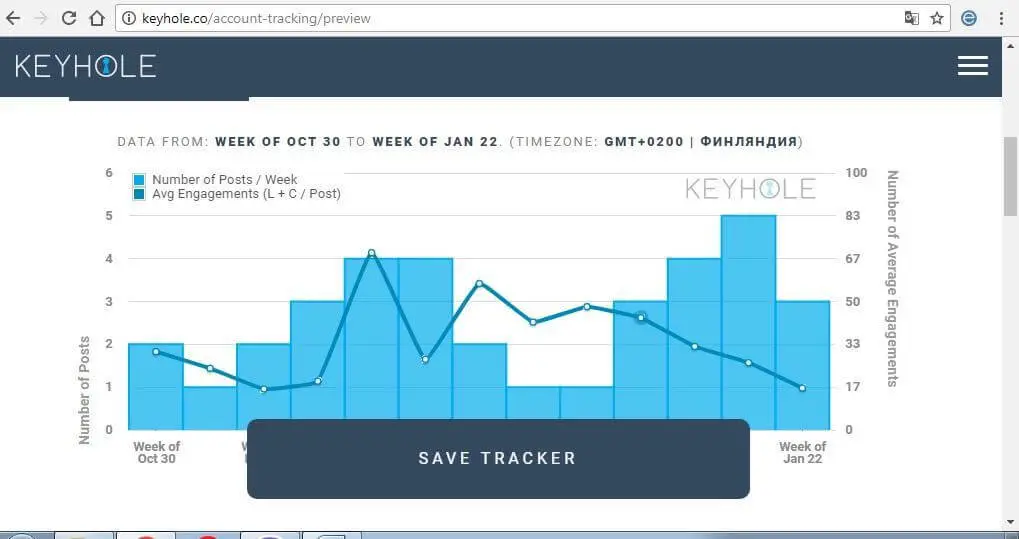
Websta.me is a convenient site for both analytics and hashtag selection. It allows you to view information on publications, interact with subscribers, and find the most popular accounts and hashtags.
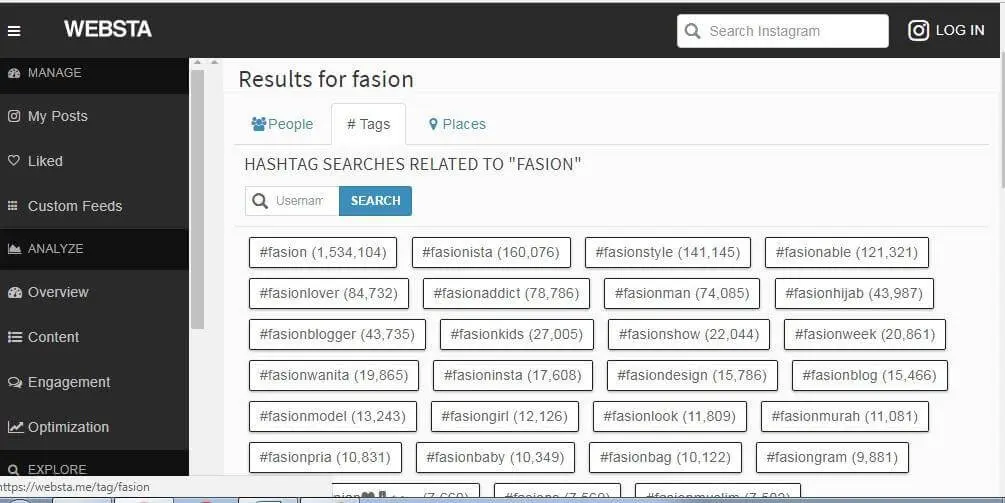
If you want to know how many visits to the main site a social network brought you, your best assistant is Google Analytics.
For analysis, you can use the built-in statistics for Instagram business accounts or third-party services (paid and free). Whichever you choose, we recommend entering your analysis into Excel in parallel.
Make a table and mark the main indicators in it daily. It is convenient, practical, and very informative. This way, you will be able to see the change in KPIs for Instagram.
Final thoughts
The setting, tracking, and understanding of Instagram KPIs don’t happen overnight. It is a process that takes testing and trial to see what Instagram metrics work for your business and what vanity metrics are.
It is also worth mentioning that Instagram for small businesses may not be the same for large businesses. Metrics that work for one size or niche can show completely opposite results in different industries or sizes of businesses.
Analyze, and you will be able to take action in time to improve your Instagram profile.





